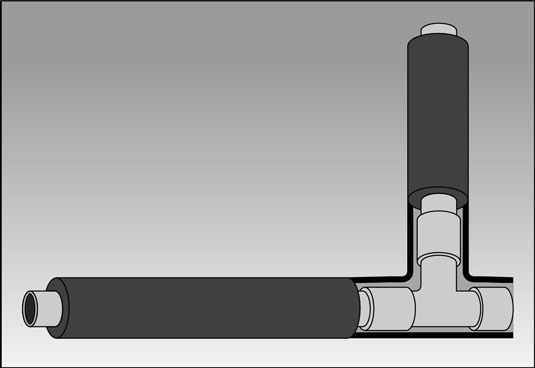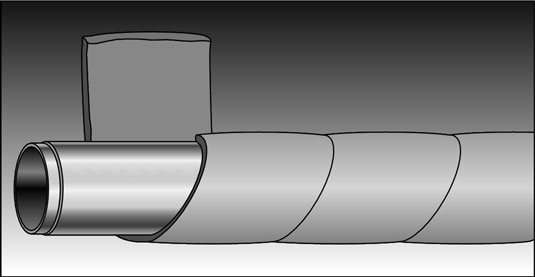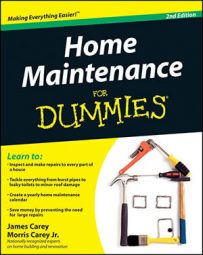Putting insulation around all accessible water pipes saves energy, prevents freezing during most moderate to medium chills, and reduces condensation when pipes flow through attics and crawlspaces. It’s also cheap insurance. A pipe that bursts in the crawlspace is no joy to experience or repair, but it’s bearable. A pipe that bursts in the attic is an altogether different story.
Be sure that the tape that holds the insulation in place and the insulation itself are in good shape. If either the insulation or the tape crumbles to the touch, replace it. You can remove crumbling insulation with nothing more than a gentle tug. With the insulation removed, all you have to do is slip a new piece in place.

If you live in an area where temperatures frequently reach below freezing, and you’ve installed pipe heaters (wire or tape), don’t insulate these pipes without first getting the approval of the company that manufactures the pipe heaters. By the way, pipe heaters also deteriorate. If you see signs of deterioration or fraying, it may be time for replacement.
As with other kinds of insulation, the material that surrounds your heat ducts reduces energy costs while improving the effectiveness of your central heating and cooling system. It also helps prevent unwanted condensation in attics and crawlspaces, thereby reducing the chance for mold, mildew, and the foul odors associated with them.
Insulation is wrapped around and around the duct in a corkscrew fashion. Air currents, rodents, house movement, and vibration in the heating system can cause the insulation to loosen and fall away from the ducting. Reattaching or adjusting the insulation to cover the ducting is a good thing. While you’re there, add an extra layer — it couldn’t hurt.

You can “stitch” a nail into insulation to hold it together. You do this in the same way that a seamstress uses a sewing pin to hold two pieces of fabric together.
A thin layer of plastic, which acts as a vapor barrier, surrounds modern insulated ducts and prevents moisture from attacking the insulation and the ducting. If rodents or sloppy workers damage the thin plastic vapor barrier, use plastic sheeting (any kind) and metal tape to fix the barrier. Actually, for small tears, just tape over the damaged area in the same way that you’d cover a cut with a Band-Aid. For areas of larger damage, use a piece of plastic as a patch held in place with metal tape. Make sure the tape seals all four sides of the patch.
Those same workers, house shifts, and pesky rodents also can cause duct damage that creates air leaks. This condition can result in major heat or cooling loss and can substantially increase your energy bill. Therefore, checking for duct leaks can pay off big time. Because most ducting is covered with insulation, leaks can be hard to find.
Here are a few signs that may indicate a leak:
Ducting that is crushed or badly bent
Insulation that has darkened
An area around the ducting that is warmer than normal in the winter or cooler than normal in the summer
If none of these conditions exist and you aren’t happy with your energy bill, hire a home-comfort specialist — a heating contractor — to perform a duct leak test. He’ll cap off all register outlets and pressurize the duct system. If pressure loss occurs, the contractor will search out the leak using smoke and then repair it.

